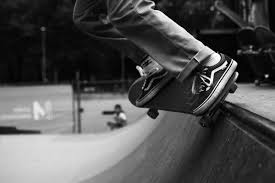Skateboarding has evolved dramatically over the years. From a humble pastime to a dynamic global sport, one of the most notable advances has been in skateboard deck technology. The deck, often the first element to catch the eye, has come a long way from the simple wooden planks of early skateboards. Today’s skateboards are designed for specific performance requirements, offering skaters greater control, durability, and customization options. In this article, we will explore how skateboard deck technology has developed over the years and what innovations define the modern skateboard deck.
The Birth of Skateboard Decks: Early Designs
In the 1950s, skateboarding first emerged in California as a way for surfers to practice their moves on land. The original skateboard deck was nothing more than a wooden plank, often taken from old roller skates or scrap wood. These decks were not tailored for skateboarding but served as a basic platform for riders. The shapes were rudimentary, with flat surfaces and no concave or kicktails.
The early skateboards had limited features, and durability was a significant issue. Riders had to contend with cracks, warps, and breakages. The wheels were typically made of steel, and although they improved over time with the introduction of urethane, the decks themselves were still in their infancy. But it was the 1970s when skateboard deck technology began to show signs of major improvements.
The 1970s: Birth of the Modern Skateboard Deck
The 1970s marked a turning point in the evolution of skateboard deck technology. The introduction of the kicktail—a raised section at the back of the deck—revolutionized skateboarding. This new feature allowed riders to perform tricks like ollies, kickflips, and grinds, which previously weren’t possible on flat decks.
During this time, the materials used in skateboard decks also underwent a significant change. Manufacturers began using plywood instead of solid wood or other materials. Plywood’s layered structure provided greater strength and flexibility, allowing skateboard decks to withstand more abuse while maintaining a degree of responsiveness. Skateboard manufacturers also began experimenting with different shapes, and the first concave decks were created to improve grip and control.
In the 1980s, skateboard deck designs continued to evolve, with wider decks becoming more popular. The introduction of the graphic design aspect also changed the aesthetic appeal of decks, turning them into pieces of art that reflected personal style and culture.
The 1990s: The Rise of High-Tech Materials
By the 1990s, skateboarding had become a mainstream sport, and skateboarding decks were being produced in larger quantities than ever before. This decade saw the introduction of more sophisticated materials designed to improve performance.
Fiberglass became a popular addition to skateboard decks. By layering fiberglass over the wood, manufacturers created stronger and more flexible decks. The use of fiberglass enhanced the durability of the deck while keeping it light enough for street and park skaters to perform tricks with ease.
Another notable development during this time was the introduction of carbon fiber in skateboard decks. Carbon fiber provided an incredibly lightweight but strong structure, allowing for decks that were not only durable but also responsive to the skater’s movements.
The 2000s: Composite Materials and Eco-Friendly Innovations
In the early 2000s, skateboard deck technology reached new heights, thanks to innovations in composite materials. Manufacturers began to combine wood, fiberglass, carbon fiber, and other synthetic materials to create a new class of decks that offered better strength, flexibility, and reduced weight. These composite decks were more expensive, but they provided a noticeable performance boost.
This era also witnessed a growing awareness of environmental sustainability. Many manufacturers started to look for ways to make their decks more eco-friendly. One such innovation was the introduction of bamboo as a material for skateboard decks. Bamboo has a high strength-to-weight ratio, making it an excellent alternative to traditional maple wood. Additionally, bamboo is a rapidly renewable resource, which made it a more sustainable option for skateboards.
Another eco-friendly innovation in this period was the use of recycled materials. Skateboard manufacturers began using recycled plastics and rubbers in the production of their decks and wheels, reducing waste and making skateboarding more environmentally responsible.
Present-Day Skateboard Deck Technology: High-Performance and Customization
Today, skateboard deck technology is at the forefront of innovation in extreme sports. Modern skateboard decks are highly specialized, offering performance benefits for different types of skating, from street and park to downhill and longboarding.
One of the most notable advancements is the use of multi-ply construction in skateboard decks. High-end skateboards are now made from layers of high-quality Canadian maple or other premium woods. These layers are bonded together using specialized adhesives to create a more resilient deck. The number of layers can vary, with some decks containing as many as 7 or 9 plies. The more plies in a deck, the stiffer and stronger it generally is. This construction technique provides riders with greater control and precision when performing tricks.
Decks are now also designed with more specific shapes to suit different types of skating. Street skaters prefer narrower decks with a deep concave for better grip and responsiveness, while downhill skaters prefer wider, more stable decks with a flatter profile. Longboarding, on the other hand, typically features longer decks for better stability and smoother rides over long distances.
Technology in Deck Construction:
Advanced materials like carbon fiber and fiberglass are still widely used in modern decks. These materials are incorporated in strategic areas, such as along the edges or as an additional layer beneath the surface, to provide additional strength and durability. The combination of these materials has led to decks that are lightweight but extremely durable, offering excellent performance without sacrificing flexibility.
Another notable development is the use of urethane coating. The addition of urethane to the deck surface not only improves durability but also enhances grip, especially in wet conditions. Many skateboarders today prefer decks with a slick, urethane coating for the increased feel and ride quality.
Custom Decks and Personalized Features:
Customization has become a significant trend in modern skateboard deck technology. Many brands offer customizable deck designs, allowing skaters to choose from a range of colors, graphics, and shapes. Some companies even allow customers to design their own decks, creating a truly personalized skateboarding experience.
In addition to visual customization, the choice of deck features—such as the concave, kicktail, or nose—gives skaters more control over their setup. Riders can select the shape that best suits their style and performance preferences. Additionally, the integration of laser cutting and 3D modeling in deck design has allowed for more precise manufacturing, ensuring that each deck performs optimally.
The Future of Skateboard Deck Technology
As technology continues to advance, the future of skateboard decks looks exciting. With innovations in materials science, sustainability, and design, we can expect skateboard decks to become even more lightweight, durable, and performance-oriented.
The integration of smart technologies could also change the way we ride. Imagine decks that are equipped with sensors that track performance metrics, such as speed, airtime, or landing impact, and provide real-time feedback to the rider.
Additionally, as sustainability continues to be a major concern, we will likely see more environmentally friendly materials being incorporated into skateboard deck production, further reducing the carbon footprint of skateboarding.
Conclusion
Skateboard deck technology has come a long way since its humble beginnings. From simple wooden planks to sophisticated, high-performance boards made from advanced composite materials, the evolution of the skateboard deck has mirrored the growth of the sport itself. Today, skaters have access to a wide range of decks that are specifically designed to meet their needs, whether they are street skaters, downhill enthusiasts, or longboard riders.
As technology continues to evolve, skateboard decks will continue to improve in strength, flexibility, and customization, making it an exciting time for skateboarders of all skill levels. The future promises even more innovations, bringing the skateboarding experience to new heights. Whether you’re a seasoned pro or a beginner, there’s never been a better time to explore the world of skateboard deck technology.



